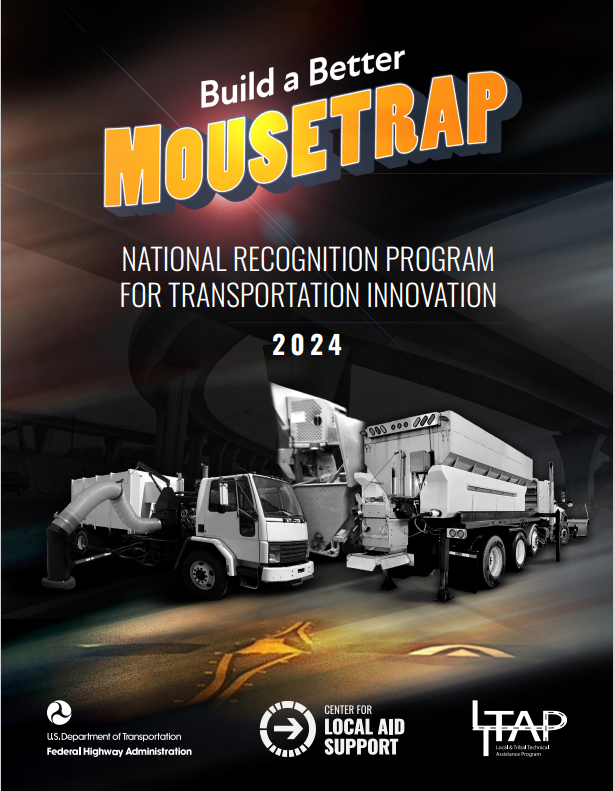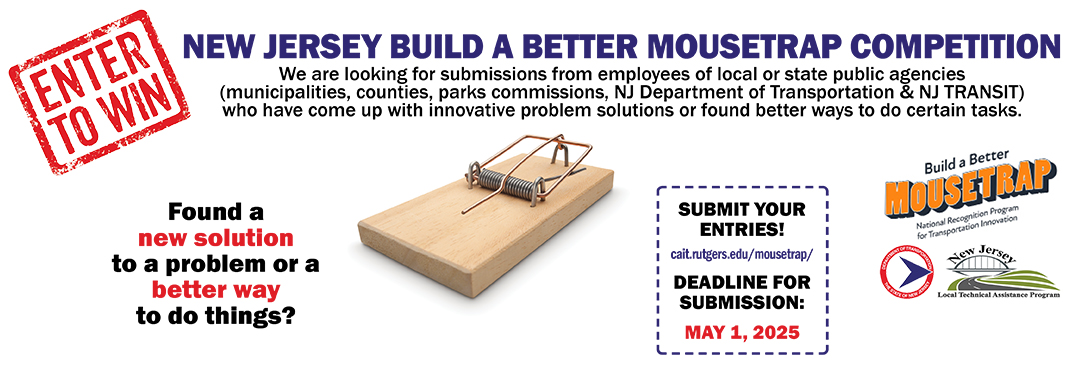New Jersey’s Build a Better Mousetrap Competition provides a great opportunity to share new ideas with others in the State and across the country. We are looking for submissions from employees of local or state public agencies (municipalities, counties, parks commissions, NJ Department of Transportation, NJ Transit) that have developed new solutions to problems or found better ways of doing things. We will gather the best ideas from around the state and judge them using a 5-point rating system. The highest scoring entries will be entered into a Build a Better Mousetrap National competition.
For more information and the entry form, click the Build a Better Mousetrap Competition. Share your innovation and get in the game!
2024 NJ BABM Award Winner
The New Jersey 2024 Build a Better Mousetrap Award was given to Bishoy Abdallah a Senior Engineer in the Transportation Roadway Design (Group-1) at NJDOT, for his Replacing Inlet Curb Pieces in Existing Concrete Barrier Curb project.
The project is a response to the current NJDOT roadway standards that require all resurfacing and preservation projects to upgrade existing inlet curb pieces to have a smaller opening. As inlet curb pieces filter rainwater and road drainage into water systems, these upgrades can reduce the amount of foreign debris entering waterways. Before this innovation, the replacement process necessitated the closure of the lane, removal of the barrier curb, and pouring of a new concrete barrier curb; all which require time, money and manpower.
To address this issue, Bishoy created two design details to outline the process of replacing and reconstructing the inlet; one specifically for barrier curbs that do not need to be replaced, and the second for damaged or cracked barrier curbs. As many existing concrete barrier curbs in NJ are not damaged, most roadway workers will be utilizing the first detail; removing the existing asphalt, going inside the inlet and replacing the inlet curb piece and inlet frame. This process makes the replacement efficient, improves safety and reduces lane closures and traffic control man hours. Bishoy and his team demonstrated the utility of the innovation through inlet curb replacements along Route 38 in Lumberton Township NJ. Currently, other NJDOT teams are utilizing these newly codified guidelines.
Want to know more about PAST WINNERS of the NEW JERSEY COMPETITION?
Check out these VIDEOS!
2023 Winner: Route 71 over Shark River Road Diet, Geraldo Oliveto, NJDOT
2022 Winner: Sawcut Vertical Curb, Gary Liedtka-Bizuga and Henry Jablonski, NJDOT
2021 State Winner: Tire Centerline Bracket, Marc Franco, Technical Specialist, NJ TRANSIT, Bus Material & Technical Support
2020 Winner: Anti-Jackknife Device, Scott Ainsley & Mark Crago, NJDOT
2019 Winner: Bridge Fender Navigation Lighting Reflective Backup System, Gerald Oliveto, NJDOT Operations Support and Engineering
2018 Winner: Roncovitz Post Pusher and Post Puller, NJDOT Crew 333
Keep the ball rolling on innovation and join the BABM competition!
Check out our latest social media ready video celebrating the past winners and their ingenious and implemented solutions!

2024 National Winners
Click here to learn more about the WINNERS of the NATIONAL COMPETITION!
Updated: October 2025

